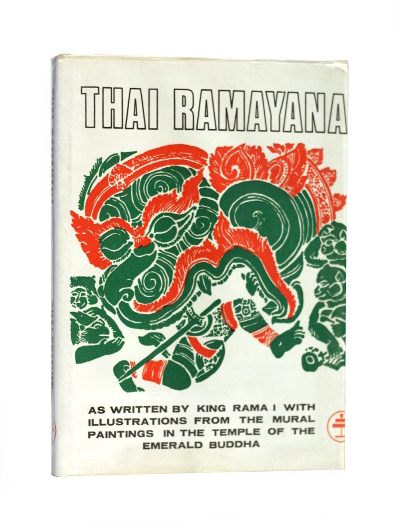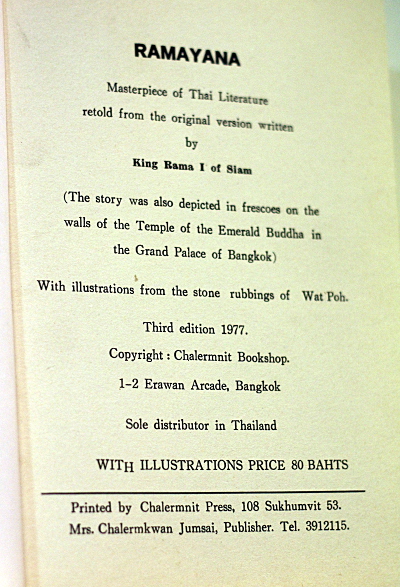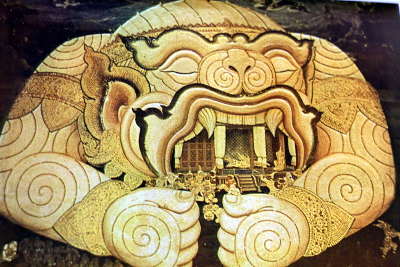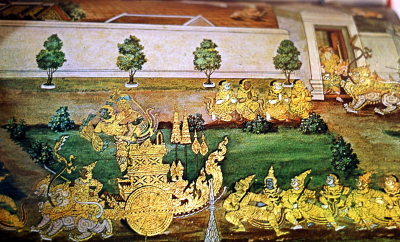About the Thai Ramayana (from Wikipedia):
The Ramakien (รามเกียรติ์; rtgs: Rammakian; literally “Glory of Rama”; sometimes also spelled Ramakian) is Thailand’s national epic, derived from the Hindu epic Ramayana.
A number of versions of the epic were lost in the destruction of Ayutthaya in 1767. Three versions currently exist, one of which was prepared in 1797 under the supervision of (and partly written by) King Rama I. His son, Rama II, rewrote some parts of his father’s version for khon drama. The work has had an important influence on Thai literature, art and drama (both the khon and nang dramas being derived from it).
While the main story is identical to that of the Ramayana, many other aspects were transposed into a Thai context, such as the clothes, weapons, topography, and elements of nature, which are described as being Thai in style. Although Thailand is considered a Theravada Buddhist society, the Hindu mythology latent in the Ramakien serves to provide Thai legends with a creation myth, as well as representations of various spirits which complement beliefs derived from Thai animism.
A painted representation of the Ramakian is displayed at Bangkok’s Wat Phra Kaew, and many of the statues there depict characters from it.





